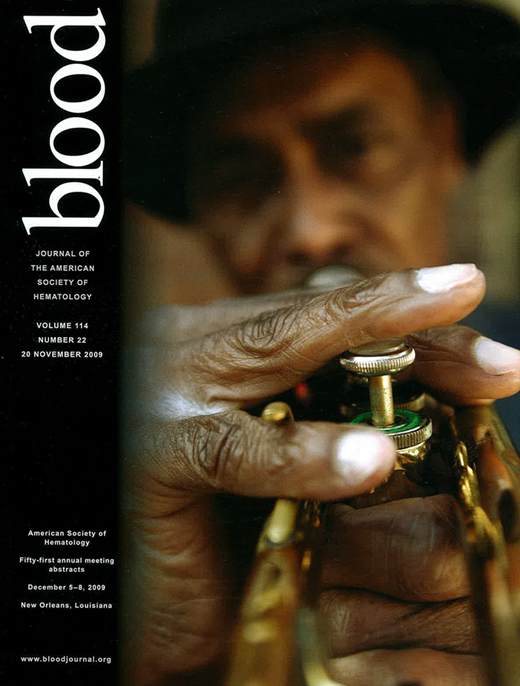Abstract
Abstract 161
Anemia is a common and often severe side-effect of chemotherapy treatment that can alter treatment regimens and can frequently require patients to receive blood transfusions. The majority of therapies approved for anemia target the erythropoietin (EPO) pathway. However, recent studies suggest an increased risk of mortality associated with recombinant erythropoietin (EPO) and its derivatives, which may stimulate tumor progression and increase the occurrence of thromboembolic events. The TGF-β superfamily of proteins has been reported to play a role in red blood cell (RBC) development, but works via a different pathway from EPO. RAP-011 is a murine fusion protein based on the activin receptor type IIA (ActRIIA) that binds to and prevents signaling of certain members of the TGF-β superfamily through the ActRIIA receptor. The purpose of the current study is to evaluate the effect of RAP-011 on chemotherapy induced anemia (CIA) in a mouse model.
To investigate the ability of RAP-011 to prevent anemia, six week old C57BL/6 mice (30/dose group) were treated with Vehicle (VEH), or RAP-011 (1 mg/kg, 10 mg/kg, 30 mg/kg) 7 days prior to chemotherapy (Day -7). On Day 0, the mice received a single dose of paclitaxel (25 mg/kg) to induce CIA. 10 mice from each treatment group were sacrificed on Days 0, 3 and 7 and blood was collected for complete blood cell counts.
On study day 0, immediately prior to CIA induction, VEH treated mice had an average hematocrit of 41.6% and RAP-011 treated mice had significantly increased hematocrits compared to the VEH cohort (1 mg/kg 43.4%, P<0.001; 10 mg/kg 42.7%, P<0.001; 30 mg/kg 43.59%, P<0.001). Similarly, VEH treated mice had an average hemoglobin level of 154.4 g/l and RAP-011 treated mice had significantly increased levels compared to the VEH cohort (1 mg/kg 167.2 g/l, P<0.001; 10 mg/kg 167.1 g/l, P<0.001; 30 mg/kg 170.1 g/l, P<0.001).
3 days following CIA the hematocrit in VEH treated mice was decreased to 38.3%. The hematocrit in RAP-011 treated groups decreased as well, but was significantly greater than VEH controls (1 mg/kg 41.0%, P<0.001; 10 mg/kg 42.9%, P<0.001; 30 mg/kg 42.3%, P<0.001). Hemoglobin measurements followed a similar pattern with VEH treated mice being decreased (137.0 g/l) whereas all of the RAP-011 treated cohorts were decreased but were significantly greater than the VEH cohort (1 mg/kg 150.8 g/l, P<0.001; 10 mg/kg 154.3 g/l, P<0.001; 30 mg/kg 151.2 g/l, P<0.001).
One week following CIA the hematocrit in VEH treated mice was still decreased compared to the baseline measurements (40.7%, P<0.001). The lowest dose RAP-011 treated group was decreased as well (1 mg/kg 42.9%, P<0.001). However, the higher RAP-011 dosed cohorts had returned to their baseline values and were significantly higher than the VEH treated cohort (10 mg/kg 44.6%, P<0.001; 30 mg/kg 43.8%, P<0.001). Hemoglobin levels in the VEH cohort returned to baseline levels (150.5 g/l) and all of the RAP-011 treated cohorts were significantly increased compared to VEH (1 mg/kg 161.4 g/l, P<0.05; 10 mg/kg 171.7 g/l, P<0.001; 30 mg/kg 167.2 g/l, P<0.001).
These data suggest that altering signaling in the TGFβ superfamily by use of a soluble ActRIIA receptor might act as a novel anemia therapy in patients receiving chemotherapy. Towards this end, ACE-011, the human analog of RAP-011, is currently in clinical development for the treatment of chemotherapy induced anemia.
Mulivor:Acceleron Pharma: Employment. Barbosa:Acceleron Pharma: Employment. Kumar:Acceleron Pharma: Employment. Sherman:Acceleron: Employment, Equity Ownership. Seehra:Acceleron Pharma: Employment. Pearsall:Acceleron Pharma: Employment.
Author notes
Asterisk with author names denotes non-ASH members.

